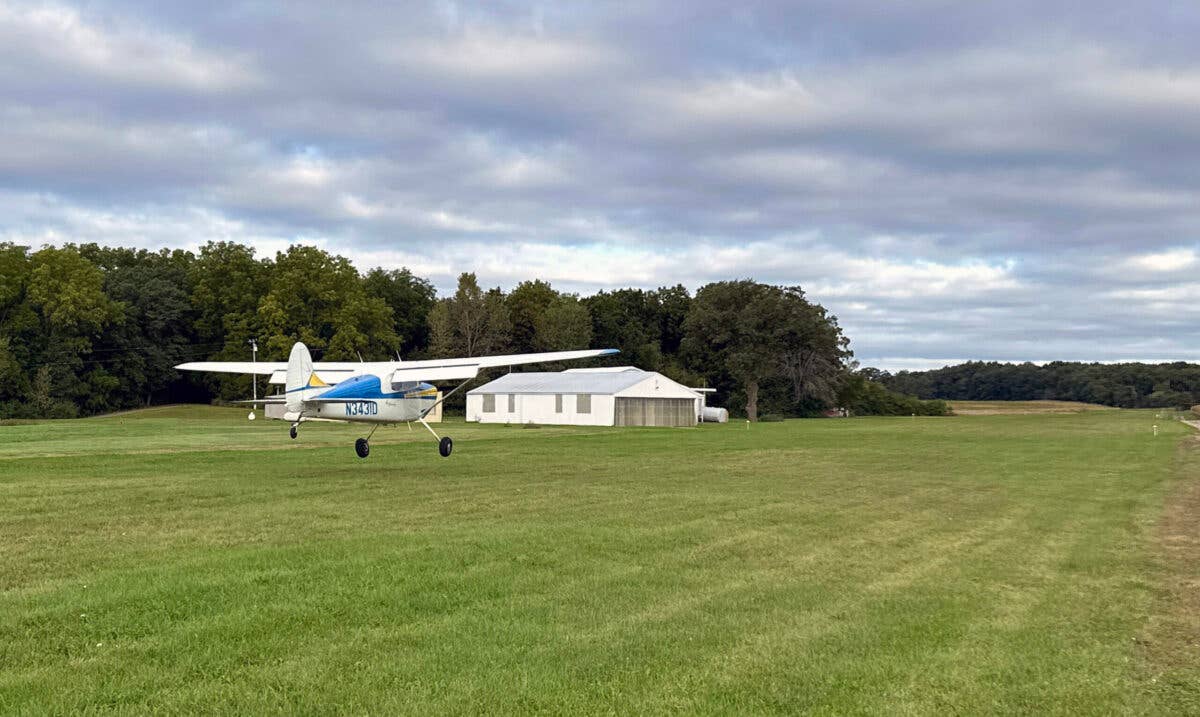The Power of the Local Aviation Grapevine
To tap into the plethora of local intelligence, whether for an aircraft purchase or lead on hangar space, you must connect personally with the folks involved.

A fellow 170 owner arrives in Wisconsin after a long flight from Washington state. [Courtesy: Jason McDowell]
One of the first things I learned to appreciate in the pursuit of aircraft ownership is the power of the local aviation grapevine. Powerful as Google is, it still lacks the ability to tap into the tattered, handwritten for sale ads pinned to the bulletin board at your local FBO, and it certainly lacks the ability to monitor rumors of owners who are starting to think about selling their airplanes without the help of the internet.
No, to tap into this plethora of local intelligence, one must connect personally with the folks involved. This is precisely how I found my own airplane. While I lamented the difficulty of locating a specific model, a friend on the other side of the country thought about it and vaguely remembered hearing that her neighbor’s friend happened to have that type and happened to be thinking about selling it.
When the time came to find a decent hangar, the local grapevine came through again. A friend at a local private grass strip thought he remembered hearing about a Stearman owner who was about to sell his Cessna 190 and might have a spot becoming available. I ended up renting the hangar spot and a condo as a package deal.
Up to that point, I had been a consumer of the local aviation grapevine. I had taken full advantage of promising leads and had reaped the rewards – but I had never contributed anything of my own. This changed last month, when a fellow Cessna 170 owner reached out to me on Instagram.
His name was Max, and both he and his wife had just accepted jobs with the state of Wisconsin. He explained they’d soon be moving to my area from Washington state and asked whether I knew of any leads on nearby hangars. This was finally my chance to give back and help another out by tapping into local intel. I decided to make it my mission to investigate and locate a hangar for him.
I had recently heard that all hangars were occupied at the airfield where I was based, so I started making phone calls to surrounding airports. The first was to the owner of the airport I had initially used. He confirmed he did have a few hangars available, but they were the variety that lack front doors, and were open to the elements. This would be a good backup plan, especially for the $125/month he typically charges, so I thanked him and continued the search.
One after another, all other local options came up short. The most desirable options were all full. I didn’t bother checking the airport with the reputation for being absurdly expensive, and I also didn’t bother checking the airport with the reputation of being a dump. I had once visited the latter and observed an actual creek happily flowing across the tattered wasteland that passed as runway 22. Tundra tires provide a lot of floatation over unimproved surfaces, but not that much.
One after another, I called the managers of the rest of the local options. And one by one, I learned that nobody had any hangars available. Dejected, I began to think I wouldn’t be able to come through for poor Max. But I kept at it.
My motives were not entirely selfless. I’d be lying if I claimed I’d make similar efforts for the owner of a Cirrus or a Mooney. Sure, I’d try to help those owners out, but it wouldn’t resemble the personal crusade I had embarked upon to find a home for Max’s 170.
This motivation stems from the many benefits that come from having another example of your type based at your home airport. With identical cruise speeds and runway requirements, you’ve got the perfect cross-country companion. You can share flying tips and techniques. But best of all, you’ve got that person’s experience and expertise to draw from when maintaining your airplane; each of you can serve as a type advisor for the other. A private, hyper-localized type club, as it were.
Out of options and ideas for Max, I was beginning to think about giving up. While putting my airplane away, I spotted the airport owner, Keith, rolling by in his minivan on one of his many daily patrols. I flagged him down and asked how long he thought it would be before the next hangar became available. “Oh, about 24 hours," he replied.
As it turned out, Keith was giving his old 172 to his son, who would be keeping it elsewhere. The hangar it was currently occupying would, therefore, soon be available. I asked him to hold it for a friend of mine and immediately messaged Max. A few short weeks later, I welcomed my new 170 friend – and now hangar neighbor – to the airfield.
It was a victory for all involved. Keith was able to instantly gain a paying tenant. Max was able to find a conveniently-located hangar at a fantastic airfield. And I suddenly had a 170 buddy with whom to fly and swap expertise.
At long last, after utilizing it for years, I had successfully managed to contribute to the local aviation grapevine. It was an accomplishment, it felt good and I’m looking forward to continuing the trend.

Subscribe to Our Newsletter
Get the latest FLYING stories delivered directly to your inbox






